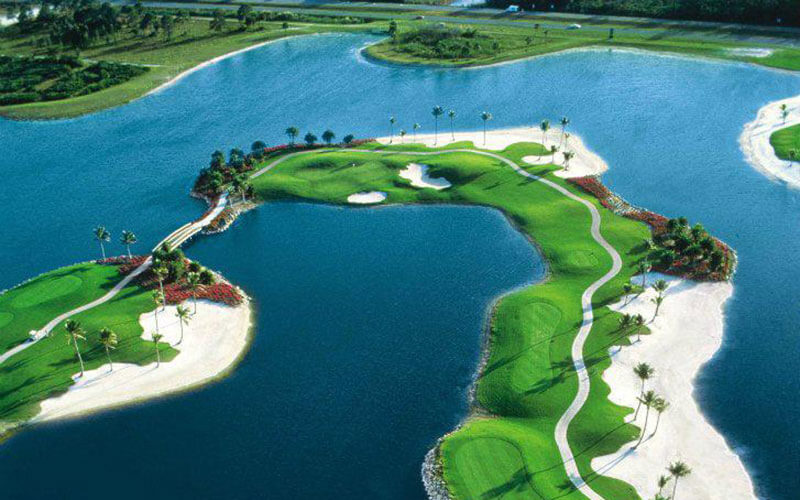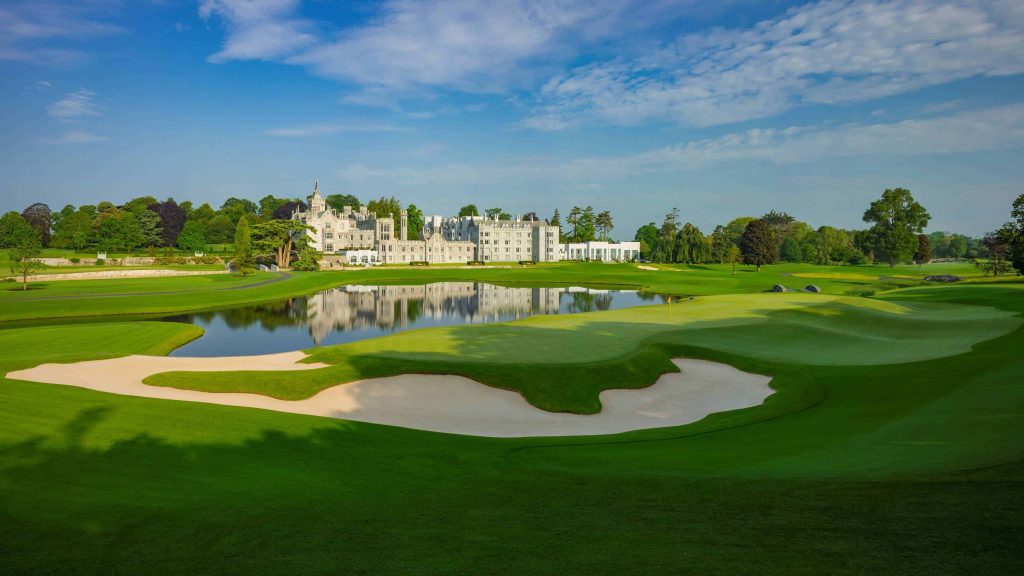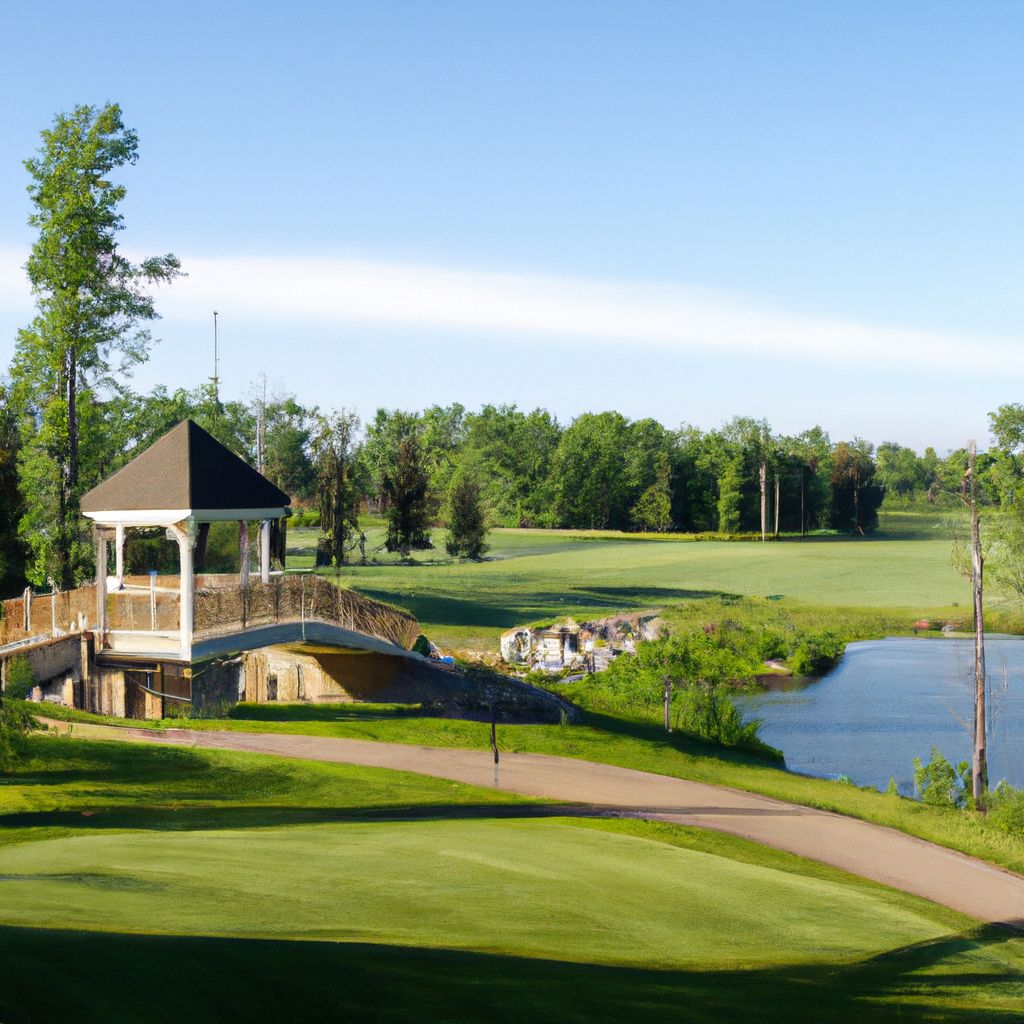Teeing Off a Dream: A Guide on How Much Does It Cost to Build a Golf Course
Key takeaway:
- The cost of building a golf course can vary depending on factors such as the type of golf course, cost per hole, and design considerations.
- Working with a qualified architect is important in order to ensure the success and quality of the golf course project.
- Additional costs and considerations include the construction of a clubhouse and facilities, maintenance costs, and exploring financing options for the project.
Introduction
Building a golf course is a substantial endeavor that requires careful consideration of various factors. In this section, we will highlight the importance of constructing a golf course and provide an overview of the key factors that influence its cost.
Get ready to delve into the ins and outs of this intriguing world, where meticulous planning, environmental considerations, and financial aspects come together to create a remarkable sporting landscape. So, let’s tee off and explore the fascinating world of golf course construction.

Importance Of Building A Golf Course
Golf courses are vital to the sporting and recreational industry. They provide an avenue for individuals to play golf, which is popular worldwide. Plus, they serve as venues for tournaments and events, for both pros and enthusiasts.
The type of golf course is important when building one. Location, terrain, and resources should be evaluated to match target market preferences. The cost per hole is a critical factor too. Design considerations like layout design, water features, hazards, tee placements, and fairway contours also affect expenses.
It’s essential to collaborate with qualified architects. They optimize costs while ensuring a pleasing and functional design. Architects balance design aspirations and financial constraints to bring out the best features within budget.
Overview Of The Factors Affecting The Cost
The cost of constructing a golf course is greatly impacted by many factors. These can range from the kind of golf course to be built, the price per hole, design, and the need for a qualified architect. Land and construction costs also make a big difference in the total expenses. Other considerations, including clubhouses, timeline, maintenance fees, and financing options, should also be taken into account.

Profitability and return on investment are other important factors that affect the cost of building a golf course. Demand, market considerations, income sources, and risks all impact the financial viability of a project.
Examining success stories and case studies can give insights into successful golf course projects and their positive impacts. To get an idea of the influences on the cost of building a golf course, all these factors should be considered comprehensively.
In addition to the above, other details about the cost of building a golf course need to be taken into account. Land availability and quality influence both purchase price and ongoing maintenance costs.
The location of the golf course impacts fees and potential demand. Buildings like clubhouses, amenities, and equipment add to expenses. Considering these specifics alongside the previously mentioned factors is key for gaining a full understanding of the cost associated with building a golf course facility.
Factors Affecting The Cost Of Building A Golf Course
Factors Affecting the Cost of Building a Golf Course: Delve into the type of golf course, cost per hole, design considerations, and the importance of working with a qualified architect, all of which play significant roles in determining the total expenses involved in creating a golf course.

Type Of Golf Course
Golf courses can differ vastly in type and design. This can have a huge effect on the expense of building them. To understand the cost factors, we need to consider the various types of golf courses. These include championship, resort, private, and public courses. Each is designed for different people and offers unique features and amenities.
Type impacts many things such as land needs, construction costs, architectural design, and maintenance expenses. Championship courses often have more complex features and need more land than public or resort courses. Let’s look at the key aspects of the different types:
- Championship Courses: High-end facilities made for professional tournaments and keen golfers. They usually have tricky layouts with lots of hazards and great landscaping. Costlier to build and maintain due to their complex infrastructure.
- Resort Courses: Usually part of a resort or hotel. Offer an enjoyable golfing experience, plus other activities. Place emphasis on aesthetics and views. Less challenging than championship courses.
- Private Courses: For members or those in a specific community or club. Luxury amenities like clubhouses, food, and personalized services.
- Public Courses: For all to play at low rates. Focus on accessibility and affordability.
Each type has its own characteristics and requirements. People constructing a golf course must assess their target market, finances, and goals to make decisions. By understanding the uniqueness of each type, they can better manage the complexities of creating a successful golf facility.
Cost Per Golf Hole (per square foot)
The cost per hole of a golf course is an important factor to consider. This cost can differ depending on the type of course, design, and architect. Let’s look at the components that contribute to the cost per hole: land, construction, design, and maintenance. Unique details not discussed can also incur costs. It is essential to do research and talk to experts for an accurate estimate.
Design Considerations
Designing a golf course requires various factors to make it successful and sustainable. This includes the layout and terrain, equipment and facilities. All elements need careful consideration to ensure a visually appealing and enjoyable experience for players at any skill level.
Architects must think of several key factors for the layout. This involves assessing elevation changes, natural hazards and strategic challenges to create a balanced playing experience. Landscaping and vegetation should also be considered to enhance the aesthetics and minimize water usage/maintenance.
Additionally, players’ needs should be met with amenities such as practice areas, driving ranges, and clubhouses. These should be conveniently placed and blend with the overall design. Accessibility for people with disabilities and environmental sustainability practices must also be taken into account.
To make sure all design considerations are addressed, it’s important to work with a qualified architect who has knowledge in golf course architecture and experience in designing courses. This will result in a successful course that attracts players while minimizing potential issues.
Importance Of Working With A Qualified Architect
Architects are essential for constructing a golf course. Their qualifications guarantee that the design and layout meet the particular needs of the course, taking into account factors like terrain, drainage, and accessibility. Working with a suitable architect helps to make sure the golf course is eye-catching, practical, and sustainable.
Knowledgeable architects have a deep understanding of the different elements involved in setting up a golf course. They consider aspects such as the type of land, vegetation, and existing structures on the site. With their expertise and experience, they can craft a design which maximizes the land’s potential while keeping costs low.
They must also consider design details like fairway width, bunker placement, tee box location, and green complexes. These components are carefully planned to create testing yet enjoyable playing experiences for golfers of all abilities. A well-crafted course not only upgrades the overall player experience but also brings in more players and more income.
Aside from their design proficiency, qualified architects work closely with construction teams to ensure that the golf course is constructed according to plan. They offer advice on building techniques and materials to achieve cost-effective results without compromising quality. Their supervision during the construction process helps reduce delays, errors, and extra expenses.
Pro Tip: When selecting an architect for your golf course project, look into their experience in designing similar courses within your area or climate conditions. This will make sure they have valuable knowledge on local regulations, environmental factors, and maintenance requirements.
Land And Construction Costs
Land and construction costs are key considerations when determining how much it costs to build a golf course. In this section, we will explore the specific factors that contribute to these costs and their impact on the overall budget.
From the cost of acquiring suitable land to the expenses involved in construction, we will delve into the financial aspects that shape the golf course development of a golf course. Get ready to uncover insights into the price tags associated with creating these green fairways.
Cost Of Land
Costs of land are a huge factor in the construction cost of a golf course. It hugely affects overall expenses and financial feasibility of the project. Where the land is, how available it is, and how large it is all determine its value and cost.

Let’s get into relevant factors and considerations when it comes to the cost of the land. First, it’s important to figure out if the property is suitable for constructing a golf course. Kinda like, what’s the topography, soil quality, access, existing natural features? How close is it to urban areas and amenities? All these can influence costs.
Another factor is size. Bigger courses with more holes require more land, meaning increased cost. So, it’s essential to check the number of holes desired and plan accordingly.
Regulations and zoning restrictions will also affect costs. These regulations differ from region to region, so it’s important to look into this during the site selection process.
Experienced developers know that careful evaluation, market research, and great negotiation skills are necessary for getting great land at an awesome price. Like one project where the developer bought a huge piece of land at a competitive price due to strategic timing and negotiations.
So, understanding all these elements related to getting land for a golf course will help investors estimate costs accurately and pick a property that meets their vision.
Achieving your golf-course dreams can cost a lot, but you’ll have a great excuse to miss out on those expensive therapy sessions!
Construction Costs
Constructing a golf course can cost varied amounts, depending on factors such as the land’s price and the kind of golf course.
But, there are other expenses to factor in. These include the costs for the clubhouse and facilities, plus maintenance costs for the construction phase.
What’s interesting is that an architect is vital in the construction process. They add expertise and creativity to develop a good golf course project.
Additional Costs And Considerations
When considering the cost of building a golf course, there are several additional factors and considerations to bear in mind. We will delve into the expenses and considerations surrounding the clubhouse and facilities, the timeline for construction, and the ongoing maintenance costs, as well as explore the various financing options available. By understanding these aspects, you’ll gain valuable insights into the financial aspects of bringing a golf course to life.
Clubhouse And Facilities
Professionals in the golf course construction industry should pay attention to the clubhouse and facilities. They are essential for enhancing a golf course’s appeal and functionality. The clubhouse is a central gathering spot – with locker rooms, dining areas, pro shops, and admin offices. Other facilities, such as practice areas, driving ranges, putting greens, and storage buildings, boost the experience for golfers and can attract more visitors.
When constructing a golf course, it’s important to consider the clubhouse and facilities. Think about the golf course design and size, ensuring they meet both current and future needs. Cost depends on size, finishes, and architectural design. Work with an experienced golf course architect to meet functional requirements and budget constraints.
It’s essential to incorporate a clubhouse and facilities into the layout and design of a golf course. This will ensure success and meet the needs of both current and future golfers.
Timeline For Building A Golf Course
Constructing a golf course needs a well-planned timeline for it to be finished on time. Factors like getting land, money, and building processes all contribute to the timeline.
It’s very important to work with an experienced architect when making plans. Also, working with professionals specialized in golf course construction can reduce problems and delays.
This timeline is just a guide, and each project will have its unique considerations. Complex sites, environmental regulations, or unexpected issues can affect the timeline. Good planning, communication with contractors and suppliers, and resource management can help avoid delays.
Building golf courses can be costly, but the maintenance costs? They’ll make you wish for a hole-in-one!
Maintenance Costs
Getting skilled personnel to carry out proper maintenance of golf courses is a must. The costs vary with the size of the course, climate, maintenance program, wages of staff, and access to special equipment.
Maintaining a top-notch golf course is key to its long-term success – it’ll attract players and keep them satisfied. Not to mention, effective maintenance practices will help preserve the environment and conserve resources.
Now, let’s take a look at ways you can finance your golf course ambitions!
Financing Options
Securing funds for a golf course construction can be tricky. Alternatives to cover the costs are available. These include:
- Private investors – individuals or firms who see potential profit from a well-planned, properly located golf course.
- Bank loans – financial institutions may offer loans designed for golf course constructions and consider projected revenue and repayment terms.
- Partnerships with developers and golf management companies – these have existing affiliations with banks and can help with financing.
- Government grants or incentives – depending on the area, these can cover land acquisition, infrastructure development, and environmental factors.
Evaluate each option carefully and consider multiple avenues. This increases the odds of collecting the necessary funds and reduces risks.
As an example, The Links at Spanish Bay in California was funded by private investments, bank loans, and a partnership between Pebble Beach Company and the Japanese company Taiheiyo Golf. The result was a world-class golf course with Japanese influences. Today, it is renowned and attracts players from around the world. This demonstrates how collaboration and thoughtful selection of financing options can lead to a successful, profitable golf course.
Conclusion
Creating a golf course is a big investment. It requires various components to figure out the cost. These components include:
- Land purchase
- Design
- Constructing
- Clubhouse features
- Irrigation systems
- Maintenance fees
Land acquisition is a main factor in the cost. Location, size, and accessibility all affect the price. Design and construction also need to be taken into account. Expert architects and landscape designers are needed to make a beautiful and useful layout. Earthworks, grass, and other infrastructure must be done for the construction.
Apart from the initial costs, more money is needed for the golfers’ amenities. These include locker rooms, pro shops, restaurants, and parking areas. Irrigation systems must be installed and kept up to maintain the golf course’s quality.
Some Facts About How Much Does It Cost To Build A Golf Course:
- The cost of building a golf course can range from $800,000 to $25 million.
- The average cost to build an 18-hole course is around $10 million, not including land expenses. (Source: GolfCartReport)
- Maintenance costs for a golf course can range from $10,000 to $1 million per year. (Source: The Cost Guys)
- The process of building a golf course can take 2-4 years, including the grow-in period. (Source: PitchMarks)
- The profitability of owning a golf course depends on managing expenses and generating income from various sources. (Source: GolfSpan)
FAQs About How Much Does It Cost To Build A Golf Course
How Much Does It Cost To Build A Golf Course?
The cost to build a golf course can vary widely depending on factors such as the type of course, location, amenities, and size. The median cost is $14 million, excluding the cost of purchasing the land. Some courses can be built for as low as $7 million, while others can cost up to 25 million dollars.
What Are The Factors That Influence The Cost Of Building A Golf Course?
Several factors can influence the cost of building a golf course, including land costs, design fees, construction expenses, and ongoing maintenance costs. Other factors that can impact costs include the complexity of the project, terrain, soil type, desired amenities, and the number of holes.
How Long Does It Take To Build A Golf Course?
The construction process for a golf course typically takes 2 to 4 years, not including the time to build a clubhouse. This timeframe includes grading the land, drainage system installation, shaping the course, green construction, grassing and seed preparation, and the grow-in period.
Is Owning A Golf Course A Profitable Venture?
Owning a golf course can be profitable if managed properly. However, profitability depends on factors such as location, demand, competition, and effective management of expenses. Generating income from membership dues, pro shop sales, food and beverage sales, and golf lessons can contribute to the financial success of a golf course.
What Are The Ongoing Maintenance Costs For A Golf Course?
Ongoing and future maintenance costs for a golf course can range from $10,000 to $560,000 per year, depending on the type of course and desired conditions. These costs cover expenses such as mowing, irrigation, fertilization, pest control, equipment maintenance, staff salaries, and other operational expenses.
What Financing Options Are Available For Building A Golf Course?
Financing options for building a golf course can include small business loans, private equity financing, conventional financing, loans from life insurance companies, and commercial mortgage-backed security loans. The specific financing option chosen will depend on factors such as the project’s size, cost, and the developer’s financial situation.






